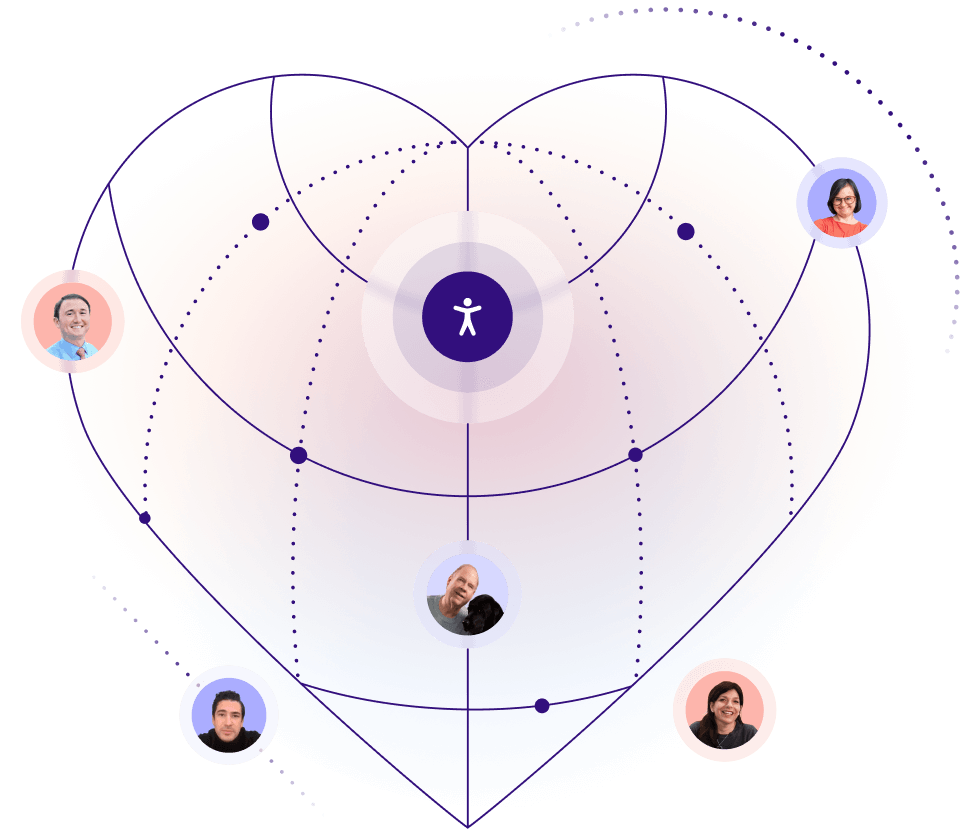Back-to-school season isn’t just about pencils, notebooks, and laptops - it’s about making sure every student has what they need to succeed. For too many, hidden barriers get in the way. Accessibility should be at the top of every school’s shopping list. With the right support, students of all abilities can thrive.
My academic journey
Growing up, I was diagnosed with a reading disability and ADHD. I was an average student, always scrambling to keep up. Reading assignments took me much longer than my peers, and I often felt one step behind.
Everything changed after my spinal cord injury, which left me paralyzed below my shoulders and a power wheelchair user. Overnight, I lost the physical ability to turn pages, write with a pen, or type on a keyboard with my fingers. Suddenly, I had no choice but to rely on technology and accommodations in order to keep learning. But in many ways, this opened doors I hadn’t had before.
My textbooks were converted into PDFs, paired with reading software that highlighted sentences and words in real time while reading them aloud. I could control the speed, listen, and follow along visually. What once took me hours now took a fraction of the time and I could review material multiple times in one sitting. This combination of hearing and seeing words unlocked my memory and comprehension in powerful new ways.
The result? I went from being an average student to graduating cum laude from undergrad and magna cum laude from law school - without ever physically turning a page.
Another game-changer was voice dictation software. Not only did it allow me to “type” quickly, but it also sharpened my spelling and gave me the freedom to focus on storytelling and building strong written arguments. With accommodations like note-takers, private testing rooms, extra time, and voice-to-text tools, I had everything I needed to succeed on equal footing with my peers.
What helped me succeed
Accommodations aren’t a weakness, they’re a strength. The combination of hearing and seeing words unlocked my memory and comprehension in powerful new ways. Just as important, content itself needs to be clear and easy to understand.
Accommodations like this allow students to focus on learning, not on the barriers. As classrooms adapt, so must the digital tools schools rely on—like online homework portals, gradebooks, and learning management systems. If these platforms aren’t accessible, students and parents are locked out of critical parts of education.
Why accessibility matters for schools and beyond
Accessibility isn’t just about compliance, it’s about empowerment.
- For students: Technology and accommodations transform challenges into opportunities.
- For schools: Accessibility means more than ramps and classrooms. It includes ensuring digital platforms and uploaded files like homework PDFs, worksheets, and reading materials are fully accessible and written to include different abilities, including those with learning or cognitive disabilities. Without this, students may be excluded from key learning.
- For businesses: Just like schools, companies must make their digital content—documents, apps, and websites—accessible to everyone.
Accessibility in education isn’t just about the classroom, it’s also about the digital experience. From online homework portals to PDFs, syllabi, and assignments, students need content they can actually read and use. That means schools should think about readability—like providing plain language options—and ensuring that digital files are accessible to screen readers and other assistive technologies.
At accessiBe, we’re working to create a barrier-free learning environment for all.
A parent’s perspective
As a dad, I see the importance of accessibility every day. Helping my 8-year-old daughter with her homework often means adapting technology so I can fully participate. Sometimes that’s using a wireless document camera to project her workbook onto the TV so I can follow along. Other times it’s using tablets or screen-sharing tools to review her practice lessons.
Accessibility in parenting, like in education, is about creativity and leveraging the right tools to stay engaged and supportive. It proves that barriers don’t have to stop kids or parents from learning together.
The bigger picture
Students and families don’t always know what accommodations exist. That’s why schools and organizations must proactively provide solutions. Accessibility in the classroom and accessibility online share the same goal: giving every person the chance to participate and succeed.As you prepare for another school year, remember: accessibility belongs on your back-to-school shopping list. That means ensuring materials are usable, digital platforms are accessible, and content is written in ways every student and parent can understand.
Frequently asked questions on why accessibility should be on your back-to school shopping list
What does accessibility mean in education?
Accessibility in education means giving every student equal access to learning—whether in the classroom or online. It includes accessible technology, inclusive materials, and supportive teaching practices that empower students with disabilities to learn, participate, and thrive. Accessibility is about giving every student the tools to succeed and ensuring learning is inclusive, independent, and empowering for all.
Why does Josh Basile share his perspective on back-to-school?
Josh Basile, a disability rights advocate and accessiBe’s Community Relations Manager, shares how accessibility tools shaped his own education and independence. His message reminds readers that accessibility isn’t an add-on—it’s essential for every student to reach their full potential.
Why is digital accessibility important for students?
Digital accessibility ensures that online classrooms, learning portals, and educational tools work for everyone—including students who use assistive technologies like screen readers or voice navigation. When schools prioritize accessible design, they create a more equitable and engaging learning experience for all.
What does school accessibility look like in practice?
School accessibility means designing both physical and digital spaces that everyone can use. It’s everything from wheelchair-friendly classrooms to accessible PDFs, clear online communication, and flexible learning formats that reflect how diverse students engage with education today.
How can teachers, parents, and peers support students going back to school?
Support starts with listening. Ask what each student needs to feel included, share accessible resources, and advocate for equitable access to technology and materials. Creating an environment of awareness and empathy helps every student start the school year with confidence.
What kinds of accessibility tools can support students with disabilities?
Students benefit from tools like screen readers, voice dictation, captioning software, alternative keyboards, and accessible digital content. These tools help students engage fully in class, complete assignments, and connect with teachers and peers independently.


